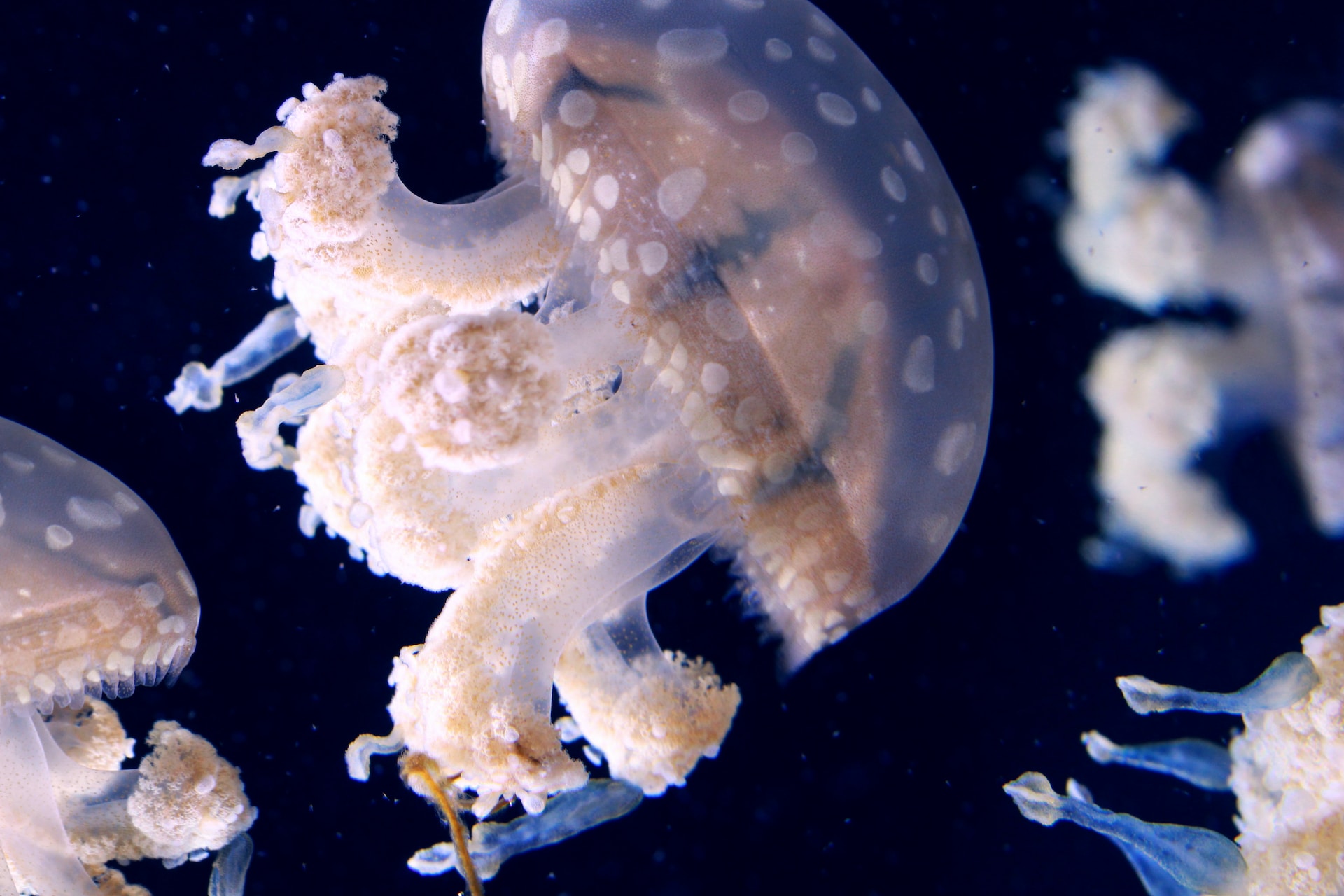Mastigias papua etpisoni is the formal name for a type of jellyfish that inhabits the warm coastal seas of the Pacific Ocean. This jellyfish species has a unique coloration due to the presence of zooxanthellae, algae that live symbiotically with coral. The relationship between the jellyfish and the algae not only enhances its appearance but also plays a role in maintaining marine ecosystems. Spotted jellyfish serve as an important food source for various marine animals and contribute to nutrient circulation, supporting the growth and survival of many marine species. The abundance of mesmerizing spotted jellyfish depends on several biological factors, including environmental conditions, predation, and human activities, which collectively contribute to their ecological importance and coexistence.
Spotted jellyfish thrive in warm coastal areas characterized by suitable temperatures and water quality. Changes in these factors can significantly impact their ability to survive and reproduce. The movement and distribution of spotted jellyfish are influenced by ocean currents, while salinity changes play a crucial role in their long-term survival. The population dynamics of spotted jellyfish are influenced by predation from sea turtles, certain fish species, and other jellyfish, as well as competition for resources such as food and habitat. These types of jellyfish are typically not considered dangerous to humans. While they possess venomous cells called nematocysts, their stings are generally mild and not harmful to most people. However, individual reactions to jellyfish stings can vary, and some individuals may experience more severe reactions or allergic responses.
The effects of a type of jellyfish sting can range from minor discomforts, such as itching and redness, to mild pain and skin irritation. It is advisable to rinse the affected area with seawater, remove any visible tentacles with tweezers or a similar tool (without using bare hands), and apply a topical solution to alleviate symptoms, such as vinegar or baking soda paste. If there is a severe reaction or the symptoms persist, seeking medical attention is recommended.
It’s worth noting that even though spotted jellyfish may not pose a significant threat to humans, it’s always wise to exercise caution when encountering jellyfish or other marine creatures in the water, as some species can be more venomous and potentially harmful. Spotted jellyfish are a visually captivating group of jellyfish species known for their distinct appearance and prominent spots. Their lifespan is approximately one year, and their population numbers fluctuate based on environmental conditions, food availability, and reproductive success.
Efforts to protect the stunning spotted jellyfish and their habitats involve engaging in responsible coastal and marine activities, supporting sustainable fishing practices, reducing pollution, and raising awareness about the importance of wildlife conservation. The spotted jellyfish encompasses three different species: Mastigias papua etpisoni, Phyllorhiza punctata, and Mastigias cf. papua. Among these, Mastigias papua etpisoni is the most widely recognized species. Phyllorhiza punctata, also known as the white-spotted jellyfish, is native to the Pacific Ocean but has been introduced to other regions. The Papua New Guinea spotted jellyfish closely resembles Mastigias papua etpisoni, requiring further research for accurate differentiation.
Scientifically referred to as Phyllorhiza punctata, the white-spotted jellyfish is an intriguing species notable for its unique size and appearance. It features white or cream-colored spots on its translucent bell, which contrast beautifully with its pale body. The white-spotted jellyfish possesses long, thin stalks extending from the sides of its bell. The fully grown jellyfish can have a bell diameter ranging from 20 to 30 centimeters (8 to 12 inches), with its appendages often exceeding the size of the bell. Size variations in white-spotted jellyfish occur based on geographical location, environmental conditions, and growth rate.
The hypnotic jellyfish species known as Mastigias papua etpisoni exhibits remarkable beauty. Its transparent bell is adorned with captivating blue-to-brown spots, forming an enchanting pattern that enhances its allure. These spots are the result of the presence of zooxanthellae, algae that coexist with the jellyfish. It’s important to note that while the brown and blue spots on the fascinating jellyfish are well-known, there are other jellyfish species with different colors and patterns. To delve deeper into brown-and-blue-spotted jellyfish species, it is recommended to consult reputable marine biology resources, scientific journals, and academic institutions specializing in jellyfish research.
If you like this article you might like this article too “Bioluminescent Creatures’ Mysterious World“

